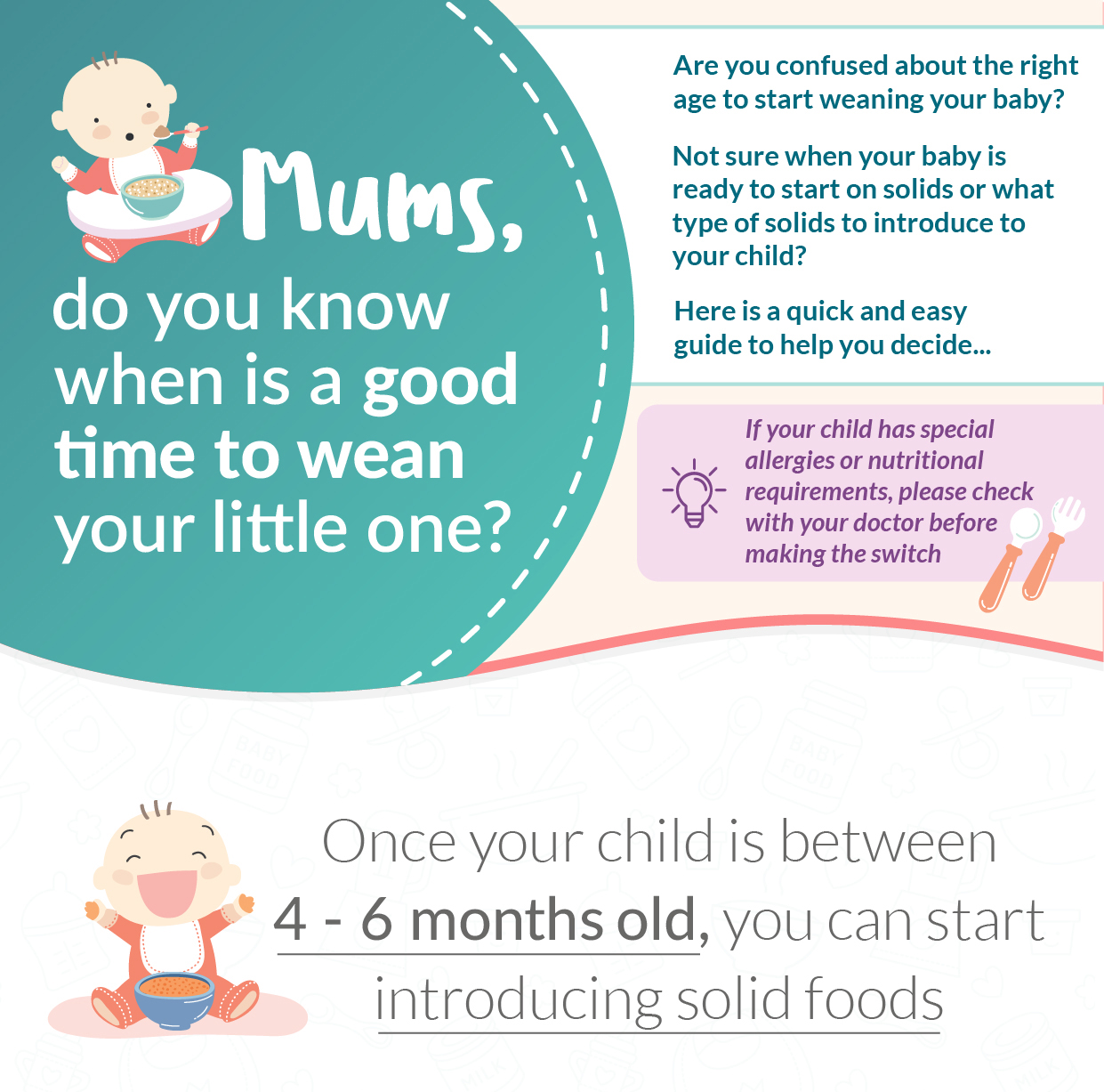Mums, your baby is now around six months old and can now sit up on his own. He watches you eat and cheekily tries to grab your food.
You know what? Your baby is now at the weaning stage. In other words, he is ready to start eating solid food.

But as a new mum, you may not be sure about the basics of a child’s weaning journey. Here’s help for you to make this transition smooth and easy!

1. Is Your Baby Ready for Weaning? The Telltale Signs
Weaning is an exciting new phase for mothers. But how can you be sure that your baby is absolutely ready to start his journey towards eating solid food?
According to most paediatricians, babies are ready for their first taste of solids by the time they are around six months old. By this age, babies begin to lose their “extrusion reflex,”or what they use for sucking a breast or bottle, and begin to develop motor skills for chewing and eating.
Here are the telltale signs that will confirm your baby is ready for this new phase of his life:

2. Baby’s First Food
Now that you are weaning your toddler, you should try to offer him food that provides all the nutrients he requires. This is important for the overall growth of your child.
According to experts, a baby’s natural stores of iron begins to deplete around the time he is ready to start eating solid food, which is at the age of six months. Because of this, babies should be given baby iron-fortified cereal, as well as foods naturally rich in iron (such as chicken or pork), as some of their first foods.
Iron-rich food should be combined with Vitamin C, which helps in the absorption of iron.
Offer him a variety of food from the four main food groups in the correct portions. Familiarise yourself as well with the serving sizes of various food groups to help you plan a healthy diet for him.

3. Texture of Weaning Food
What should be the texture of the solids that you offer to your toddler? You can’t jump straight away to giving him food that adults consume.
Mums, weaning is a journey, and so the texture of food should also gradually change as the weaning process progresses.
For example, for the first stage (at around six months), keep the texture smooth and runny to help your baby enjoy the process of learning how to eat. Give your baby soft, mashed fruit and cooked, strained vegetables at this stage. You can also give soft protein-rich foods such as beancurd/tofu, cooked and mashed lentils, and finely flaked fish.
However, as your baby’s ability to chew and bite improves between eight and ten months, you can move towards food with more texture. For example, you could add finely minced meat and finely shredded poultry in his diet.
4. How Much to Feed Your Baby
Feeding a baby is a delicate affair as every baby has a unique appetite. Feed the baby too little and he mayremain hungry. Feed him too much, and he could be overfed, resulting in possible digestive unease.
Here is how you couldportion your toddler’s solid intake:

Mums, we know that the transition from milk to solids is a bit tricky, and you might meet some resistance or challenges along this journey. But as long as you persevere and follow the advice we have detailed here, the transition from milk only to solids is bound to be smooth.
This article was republished from theAsianparent Singapore with permission.